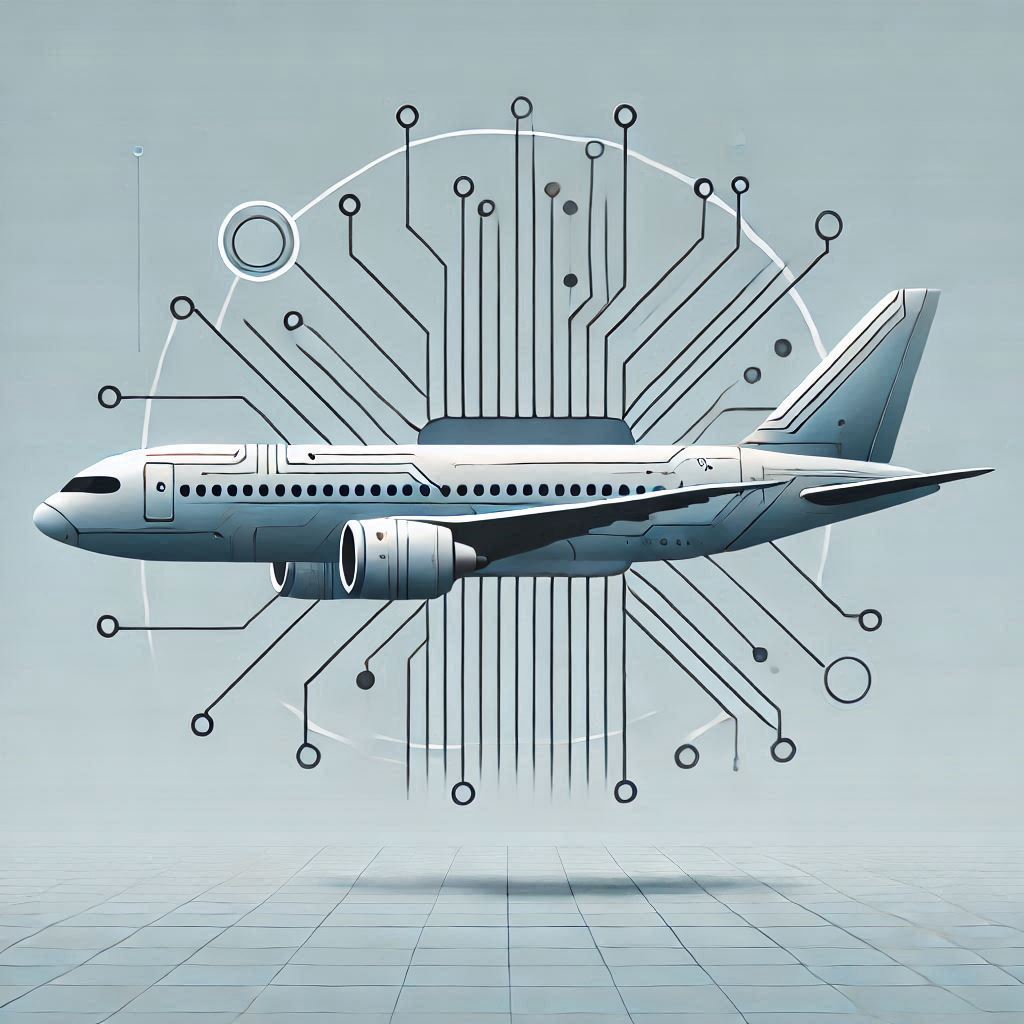The Main Idea
Researchers have developed a miniaturized, ultra-low-power wireless monitoring system with self-powered capabilities using thermoelectric generators, enabling real-time multi-parameter monitoring for aircraft smart skin to enhance safety, efficiency, and sustainability.
The R&D
Imagine a future where planes are not just vehicles of travel but smart, self-monitoring systems that ensure safety and efficiency mid-flight. Sounds futuristic? 🤔 This vision is closer to reality, thanks to groundbreaking research from the Nanjing University of Aeronautics and Astronautics, where scientists developed a miniaturized, ultra-low-power wireless monitoring system with self-powered capabilities for aircraft smart skin (ASS). 🚀
What is Aircraft Smart Skin? 💡
Aircraft Smart Skin (ASS) integrates sensors, processors, and actuators directly into the aircraft’s outer surface. It’s like giving the plane a nervous system! This enables continuous monitoring of structural integrity and environmental conditions, improving safety, performance, and reducing maintenance costs. ✈️
The Challenge 🔧
Developing ASS isn’t simple. It requires:
- Miniaturized and lightweight systems 🪶.
- Extremely low power consumption ⚡.
- Multi-parameter monitoring capabilities (impact, vibration, temperature, humidity, and air pressure) 🌡️.
Traditional systems rely on bulky batteries or external power sources, limiting their application. The researchers tackled these challenges head-on! 💪
The Solution: Ultra-Low-Power Monitoring System 🛠️
This new system measures just 45mm × 50mm × 30mm and consumes only 7.59mW—making it one of the most compact and efficient systems yet! 🌍 It features:
- Multi-Parameter Monitoring System (WMPMS) 🌟
- Monitors critical parameters like impact events, vibrations, and environmental conditions.
- Uses digital sensors based on MEMS (Microelectromechanical Systems) technology for accuracy and energy efficiency 🌐.
- Thermoelectric Generator (TEG) 🔋
- Self-powers the system using temperature differences on the aircraft surface during flight.
- This innovative approach means the system can work for 11 hours straight without an external power source. 🔥❄️
- Low-Power Hardware Design 🧩
- Smart algorithms ensure efficient processing and energy management, utilizing sleep-wake mechanisms to save power while ensuring reliability.
Key Features of the Smart Skin System 💻
- Digital Impact Monitoring: Tracks stress waves from impacts to detect and localize damage. 📍
- Environment Monitoring: Measures vibrations, air pressure, and temperature in real-time. 🕒
- Wireless Communication: Uses ZigBee technology for efficient data transfer, ensuring seamless integration with broader systems. 📡
Testing the Smart Skin 🧪
The system was rigorously tested on composite UAV wings and aluminum plates to verify:
- Impact detection accuracy: 94%—a major step forward in damage localization! 📊
- Environmental monitoring reliability: Precisely recorded temperature, humidity, and pressure data in various setups. ✅
Why Does This Matter? 🌍
This innovation holds immense potential for aviation:
- Safety First! Early detection of structural issues reduces accident risks. 🚨
- Eco-Friendly Operations: Lower power consumption and energy harvesting reduce the environmental impact. 🌱
- Cost Savings: Real-time monitoring minimizes maintenance costs and downtime. 💸
Future Prospects 🔮
The research paves the way for broader applications:
- Scalability: Networked systems for large-scale monitoring of the entire aircraft. 🌐
- Enhanced Resilience: Adaptation to harsher, real-world aviation conditions. 🌪️
- Integration in New Aircraft Designs: Making smart skin a standard feature in future fleets. 🛫
With advancements like this, the aviation industry is soaring into a smarter, safer, and more sustainable future. Stay tuned for more updates from the engineering world! 🚀✨
Concepts to Know
- Aircraft Smart Skin (ASS): Think of this as a "nervous system" for airplanes—tiny sensors and circuits embedded into the plane's outer surface to monitor its health and environment. 🛩️
- Multi-Parameter Monitoring: A fancy way of saying the system checks multiple things at once, like vibrations, temperature, pressure, and more. 📊
- Thermoelectric Generator (TEG): A device that turns temperature differences (hot on one side, cold on the other) into electricity to power the system. 🔥❄️ - This concept has also been explored in the article "Wearable Chemical Sensors: Revolutionizing Health Monitoring with Smart Technology 🧪⌚️".
- MEMS (Microelectromechanical Systems): Super small gadgets that combine sensors and circuits to measure things with precision while saving space and energy. ⚙️
- ZigBee Technology: A wireless tech that helps the sensors talk to each other and send data without using much energy. 📡
Source: Wang, C.; Wang, Y.; Pu, W.; Qiu, L. A Miniaturized and Ultra-Low-Power Wireless Multi-Parameter Monitoring System with Self-Powered Ability for Aircraft Smart Skin. Sensors 2024, 24, 7993. https://doi.org/10.3390/s24247993
From: Nanjing University of Aeronautics and Astronautics.
